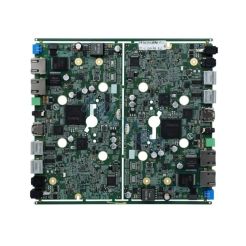PE Battery Separator
Our company has many years of experience in the field of lithium battery separators. At present, there are two production processes, wet method and dry method, with a monthly supply capacity of 20 million square meters.
Product Description
Our company has many years of experience in the field of lithium battery separators. At present, there are two production processes, wet method and dry method, with a monthly supply capacity of 20 million square meters.
The raw materials used in the dry method are of good fluidity and low molecular weight (ie, simpler raw materials), so the high temperature can only reach 135 degrees (thermal shutdown temperature), and it will shrink (<5%) when heated, and Safety is not suitable for high-power, high-capacity batteries; dry method can do three-layer film, the advantage of three-layer film is that the thermal shutdown temperature is 135 degrees, but the thermal stability temperature is 160 degrees, which can prevent thermal inertia, there is a space of 25 degrees, which is safer.
The wet method uses non-flowing, high molecular weight raw materials, and the thermal shutdown temperature can reach 180 degrees (the ceramic inorganic separators can reach 200 degrees), which can ensure the safety of high-power batteries; the wet method can only be used as a single-layer film
In the production of general lithium batteries, the dry method has advantages, such as low cost, less pollution, and more uniform pores; in terms of high-power batteries, the wet method has advantages, mainly in terms of safety and thermal shrinkage.
The characteristics and application fields of the separator produced by our company.
Excellent Electrochemical Performance: PE battery separator have a high ionic conductivity, allowing for efficient and rapid transport of lithium ions between the electrodes. This facilitates improved battery performance, including higher power output, faster charging, and increased energy density.
Good Electrolyte Retention: Pe battery Separators have good electrolyte retention properties, ensuring a sufficient amount of electrolyte is present in the battery to support ion transport. This helps maintain stable battery performance over multiple charge-discharge cycles.
Mechanical Strength and Puncture Resistance: PE separators have good mechanical strength, which enhances their resistance to punctures and tears during battery assembly and operation. This feature helps prevent internal short circuits and enhances the overall safety of the battery.
Thermal Stability: PE battery separators exhibit excellent thermal stability, enabling them to withstand elevated temperatures during battery operation. This enhances the safety and reliability of the battery by minimizing the risk of thermal runaway and related hazards.
Chemical Resistance: PE separators have high chemical resistance, ensuring they remain stable when exposed to the battery's electrolyte and active materials. This resistance helps maintain the integrity and functionality of the separator over the battery's lifespan.
Cost-Effectiveness: PE separator in a battery is a widely available and cost-effective material, making PE separators a cost-efficient choice for lithium-ion battery manufacturers. The relatively low cost of PE separators contributes to the overall affordability of lithium-ion batteries.
Versatility and Customizability: Polyethylene battery separators can be produced in various thicknesses, porosities, and sizes, allowing for customization to suit different battery designs and requirements. This versatility enables their use in a wide range of applications, from small consumer electronics to large-scale energy storage systems.
Environmentally Friendly: PE is a recyclable material, aligning with the growing focus on sustainability and environmental consciousness. Recycling PE battery separators helps reduce waste and supports the circular economy in the battery industry.
USE
PE battery separators are widely used in various lithium-ion battery applications, including consumer electronics, electric vehicles, energy storage systems, and more. They play a critical role in ensuring the performance, safety, and longevity of rechargeable batteries by facilitating ion transport while preventing short circuits between the electrodes.
Energy storage and power tools,
New energy vehicle field,
Consumer electronics.




